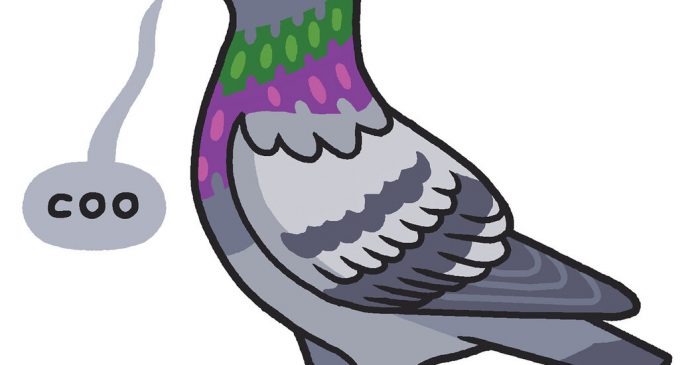This lesson is a part of our Accessible Activities feature, which aims to welcome a wider variety of learners to our site and to The Times in general. Learn more and tell us what you think here.
Lesson Overview
Featured Article: “Why City Pigeons Are Worth Watching” by Rosemary Mosco
Pigeons are polarizing birds. Some people love them — feeding them or taking them in as pets — while others view them as “rats with wings.”
In this lesson, you will learn all about pigeons — their history, their behaviors and what makes them unique. Then, you will participate in a citizen science project to make observations about local birds in your town or city.
Warm-Up
Do you see pigeons where you live? How do you feel about them? Do you love them? Hate them? Or simply ignore them?
Make a K/W/ L chart and fill in everything you Know about pigeons — what they look like, how they behave, what they eat, the history of the species and so on — and at least two things you Want to know about them.
As you read today’s article, fill in the last column of your chart with anything else you Learn about these birds, including, if possible, the answers to some of your questions.
Vocabulary
The article you are about to read includes 12 words that might be new or unfamiliar to you. Look at the list below and define any of the words you know, or use them in a sentence.
1. hue
2. humble
3. domestic
4. tame
5. feral
6. nuisance
7. beguiling
8. genetics
9. underpin
10. iridescent
11. keratin
12. plumage
To check your knowledge, study the vocabulary words using this list from Vocabulary.com.
Questions for Writing and Discussion
Read the article, also available as a PDF, and then answer the following questions:
1. Why were pigeons domesticated, or tamed? What were their earlier uses?
2. When did pigeons become less popular? Why?
3. What are some of the genetic differences among pigeons? Of the various kinds of pigeons shown in the article, which ones have you seen before?
4. How can you learn more about pigeon predators through observation?
5. What are two things you learned about pigeon anatomy, mating or history that make these birds special? Add them to your K/W/L chart from the warm-up activity.
Going Further
Option 1: Participate in a citizen science project.
Join the Cornell Lab of Ornithology’s Celebrate Urban Birds project.
Before you take part in the experiment, reflect on the birds in your region: Are there certain species of birds you frequently see? Do you know what they’re called? If you do not see birds often, why do you think that is?
Next, follow the steps below to participate in the project. You can find more detailed instructions on the Celebrate Urban Birds website or in this printable worksheet.
1. First, learn about the local birds in your region. What are the dominant species?
2. Then, choose an area — approximately 50 feet by 50 feet — to conduct your bird watching.
3. Watch the area for 10 minutes and record if you see, or do not see, any birds. It is just as important to note if you do not see any birds as it is to note the birds you do see.
4. Repeat your bird watching in the same area an additional two to three times and share your results with Celebrate Urban Birds.
Finally, return to your notes from the beginning of the exercise: Are you surprised by your results? Why or why not?
Option 2: Learn even more about pigeons.
Watch this four-minute video from TED-Ed that dives deeper into the history of pigeons and what they contribute to the world today.
What else did you learn about pigeons? Do you see the birds in a different way than you did at the beginning of the lesson? Why or why not?
Want more Lessons of the Day? You can find them all here.









